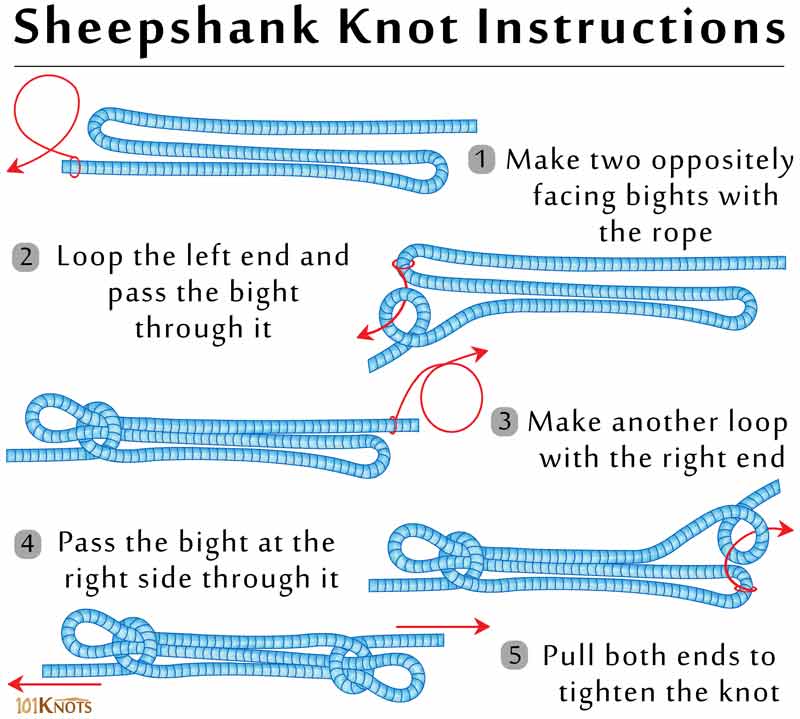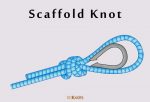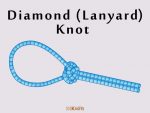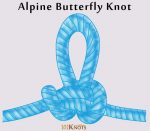Sheepshank Knot
The sheepshank knot is mostly used to shorten a length of rope temporarily. Not being a stable knot, it falls apart under too heavy or too little load. Hence, it should be avoided. The Ashley Book of Knots cautions against using it and advises to seize or secure the ends to make it safe unless the need is purely temporary.
How to Tie a Sheepshank Knot
Variations
- Kamikaze knot – This slight variation is made by splicing the middle of the sheepshank knot.
- Sheepshank with marlingspike hitches – The safest variation uses slip knots instead of half hitches for tying.
- Man-o’war sheepshank – Also known as the Fireman’s chair knot, it is a sheepshank knot with a handcuff knot in the center.
Advantages | Disadvantages |
|
|
Uses
- For securing loads to trailers or trucks.
- In sailing.
How to Tie a Sheepshank Knot Step by Step
- Make two oppositely facing bights with the rope
- Loop the left end and pass the bight through it
- Make another loop with the right end
- Pass the bight at the right side through it
- Pull both ends to tighten the knot
Alternative
Alpine butterfly knot – Safely shortens a rope while being an excellent midline knot.








